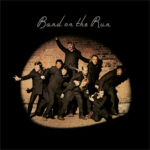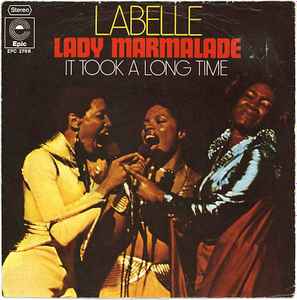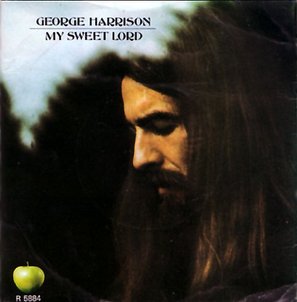 The early 1970s were a time of musical reinvention, and few artists embraced this period of experimentation and liberation as fully as Paul McCartney and his band Wings. Among the many standout tracks on their 1973 album Band On The Run, the title track stands as a testament to McCartney’s talent for blending narrative, melody, and emotional depth into a single song. Band On The Run captures the thrill of escape, the allure of adventure, and the exhilaration of liberation, transforming a simple story into an epic musical experience.
The early 1970s were a time of musical reinvention, and few artists embraced this period of experimentation and liberation as fully as Paul McCartney and his band Wings. Among the many standout tracks on their 1973 album Band On The Run, the title track stands as a testament to McCartney’s talent for blending narrative, melody, and emotional depth into a single song. Band On The Run captures the thrill of escape, the allure of adventure, and the exhilaration of liberation, transforming a simple story into an epic musical experience.
From its lyrical narrative to its inventive arrangement, the song exemplifies the qualities that made Wings one of the most influential bands of the era. McCartney’s ability to fuse rock, pop, and orchestral sensibilities into a cohesive sound is on full display, demonstrating his mastery of both songwriting and storytelling.
Wings: McCartney’s Post-Beatles Vision
After the breakup of The Beatles, Paul McCartney faced both the challenge and the opportunity of redefining his musical identity. Wings, formed in 1971 with Linda McCartney, Denny Laine, and later other key members, offered a collaborative environment that allowed him to explore musical ideas beyond the constraints of his previous band.
Band On The Run, the album, was a turning point for Wings. It represented a newfound confidence, a willingness to embrace experimentation, and an understanding of narrative and thematic cohesion. The title track, in particular, embodies the album’s spirit: a mix of cinematic storytelling, emotional resonance, and melodic sophistication.
Inspiration and Context
The inspiration behind Band On The Run stems from themes of escape and liberation, both literal and metaphorical. McCartney was exploring the idea of leaving constraints behind, whether those were personal, societal, or artistic. The lyrics tell a story of a band—or metaphorically, a group of individuals—seeking freedom, evoking images of travel, adventure, and breaking free from limitations.
Recorded primarily in Lagos, Nigeria, in 1973, the album reflects both a literal and figurative sense of journey. The challenges faced during the recording sessions—logistical issues, illness, and theft—ironically mirrored the song’s themes of struggle and liberation. This real-life adversity imbued the track with authenticity, making it more than a mere story; it became a reflection of lived experience.
Musical Composition and Arrangement
Musically, Band On The Run is a masterclass in arrangement and melodic storytelling. The song opens with a sense of urgency, establishing rhythm and momentum through tight drum patterns and driving bass lines. McCartney’s vocals enter with a conversational yet commanding tone, guiding the listener through the narrative journey.
The track is notable for its dynamic shifts. Verses are understated, allowing the lyrical content to shine, while choruses expand with layered harmonies, guitar fills, and subtle orchestration. This interplay between intimacy and grandeur mirrors the song’s narrative arc: moments of reflection punctuated by bursts of exhilaration.
Wings’ instrumental choices enhance the song’s thematic depth. Electric guitars provide melodic texture, while bass and drums maintain propulsion. Occasional keyboard flourishes add color and emotional nuance, and layered backing vocals create a sense of camaraderie and shared purpose within the song’s narrative.
Lyrical Narrative and Themes
The lyrics of Band On The Run tell a story of pursuit, escape, and the pursuit of freedom. McCartney paints a vivid picture of a group seeking liberation, using concise imagery and carefully chosen phrases to convey urgency and excitement. Lines such as “If we ever get out of here / Thought of giving it all away” reflect both aspiration and uncertainty, capturing the duality of adventure—the thrill of freedom tempered by risk.
The song resonates on multiple levels. On a surface level, it is a tale of literal escape. On a deeper level, it can be interpreted as a metaphor for artistic liberation, personal growth, or the universal human desire to break free from constraints. This layering of meaning contributes to its enduring appeal, inviting listeners to engage intellectually and emotionally.
Recording and Production Challenges
The recording of Band On The Run was famously fraught with difficulties. Wings traveled to Lagos, Nigeria, seeking a secluded environment to foster creativity. However, the band faced unexpected obstacles: studio equipment was unreliable, key members fell ill, and some of their instruments and tapes were stolen.
These challenges inadvertently shaped the final product. The rawness and spontaneity of the recording sessions are evident in the track’s energy. McCartney and Wings adapted to these constraints, embracing a “make it work” mentality that contributed to the song’s vitality and immediacy. Producer Geoff Emerick, renowned for his work with The Beatles, helped capture both clarity and warmth, ensuring that the song’s instrumentation and vocals retained nuance while conveying a sense of motion and excitement.
Vocal Performance and Character
McCartney’s vocal performance on Band On The Run is a key element of its impact. His voice is expressive, balancing narrative clarity with emotional resonance. He alternates between storytelling and declaration, guiding the listener through the song’s highs and lows.
The interplay between lead and backing vocals enhances the sense of community within the song. Harmonies are carefully arranged to underscore emotional beats, emphasizing moments of urgency, triumph, and reflection. This attention to vocal detail demonstrates McCartney’s skill not only as a singer but also as an arranger and musical director.
The Role of Dynamics
Dynamic contrast is central to the song’s effectiveness. Quiet, intimate passages draw the listener in, creating tension and anticipation. These moments are juxtaposed with powerful choruses and instrumental swells that release energy and reinforce the narrative of liberation.
Drums and percussion are used both rhythmically and dramatically, accentuating climactic points and propelling the song forward. Guitars, keyboards, and occasional brass elements provide color and texture, ensuring that each listen reveals new layers and subtleties. The dynamic range contributes to the cinematic quality of the track, making it feel expansive despite its concise runtime.
Reception and Critical Acclaim
Upon release, Band On The Run received widespread critical acclaim. Critics praised McCartney’s songwriting, the band’s performance, and the album’s cohesive vision. The title track, in particular, was noted for its narrative strength, melodic invention, and polished arrangement.
The song became emblematic of Wings’ success in defining McCartney’s post-Beatles era. While not released as a major single in all markets, it was recognized as a highlight of the album, contributing to the album’s enduring commercial and artistic legacy. Band On The Run solidified McCartney’s reputation as a versatile, imaginative, and emotionally resonant songwriter.
Influence and Legacy
Band On The Run has had a lasting influence on rock and pop music. Its narrative approach, dynamic arrangement, and thematic cohesion have served as a model for artists seeking to blend storytelling with musical sophistication. The song’s cinematic qualities—its sense of movement, tension, and resolution—anticipate the kind of narrative-driven rock that would emerge in the late 1970s and 1980s.
Beyond music, the track has inspired visual media, from concert staging to music videos. Its themes of escape and adventure resonate universally, making it a touchstone for cultural depictions of freedom, rebellion, and exploration.
Comparative Analysis: Wings in Context
Comparing Band On The Run to earlier Wings tracks or even McCartney’s Beatles-era compositions highlights its unique qualities. Unlike the concise, structured pop of The Beatles, this track embraces a sense of narrative and dynamic exploration. Unlike earlier Wings work, which often leaned toward lighthearted pop, Band On The Run combines adventure, sophistication, and emotional depth in a unified whole.
Its layered instrumentation, narrative focus, and emotional resonance mark it as a turning point in McCartney’s post-Beatles evolution. The song demonstrates that Wings was not merely a continuation of McCartney’s previous work but a vehicle for artistic growth and innovation.
Live Performances and Audience Engagement
Band On The Run became a staple of Wings’ live performances, where its dynamic energy and narrative arc could be fully realized. On stage, the song often included extended instrumental passages, audience interaction, and spontaneous embellishments, transforming the track into a communal experience.
McCartney’s charisma and performance style were central to its live success. His ability to convey narrative, emotion, and musicality simultaneously engaged audiences, making the song a highlight of concerts throughout the 1970s. The track’s combination of accessibility and sophistication ensured that both casual listeners and dedicated fans could appreciate its artistry.
Musical Analysis: Harmony, Melody, and Form
From a technical perspective, Band On The Run is notable for its harmonic richness and melodic clarity. The chord progressions are sophisticated yet approachable, providing a sense of motion and resolution that mirrors the song’s narrative of escape.
Melodically, McCartney emphasizes tension and release, using vocal inflection and phrasing to heighten emotional impact. Instrumental motifs—particularly guitar riffs and keyboard flourishes—interweave with the vocal line, creating counterpoint and reinforcing thematic elements. The song’s structure, with its dynamic shifts and contrasting sections, ensures that it maintains listener engagement throughout its runtime.
Cultural Resonance
Over four decades after its release, Band On The Run remains a touchstone in both popular music and cultural memory. Its themes of freedom, adventure, and liberation resonate across generations, while its musical sophistication continues to inspire musicians and producers.
The track exemplifies the potential of pop and rock music to combine accessibility with artistic depth. It demonstrates that a song can be both immediately enjoyable and rewarding under close analysis, offering layers of melody, harmony, and narrative complexity that reward repeated listening.
Conclusion: An Anthem of Liberation
Band On The Run by Wings is more than a song; it is a musical journey. Its combination of lyrical narrative, dynamic arrangement, and expressive performance captures the exhilaration of escape and the thrill of liberation. McCartney and Wings transformed a straightforward story into a cinematic experience, blending melody, instrumentation, and emotion into a cohesive, compelling whole.
The track stands as a testament to McCartney’s post-Beatles vision, demonstrating his ability to innovate, collaborate, and tell stories through music. Its influence on rock, pop, and narrative-driven songwriting continues to be felt, and its appeal remains undiminished.
For listeners seeking a song that combines adventure, artistry, and emotional resonance, Band On The Run remains an essential experience—a soaring anthem of freedom and creativity that encapsulates the best of Wings’ artistic vision. It is a track that invites engagement, reflection, and enjoyment, reminding us all of the power of music to elevate, inspire, and transport.


